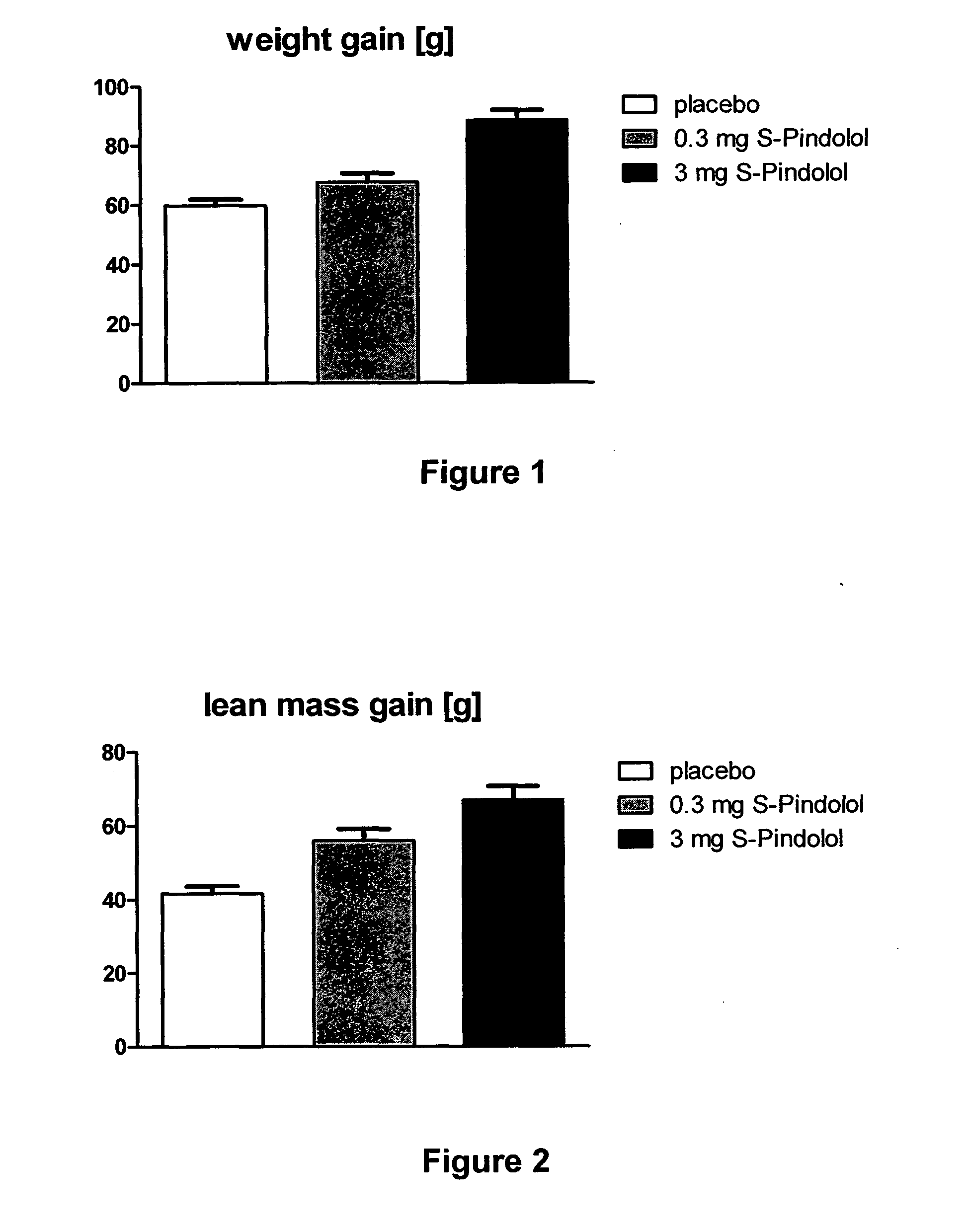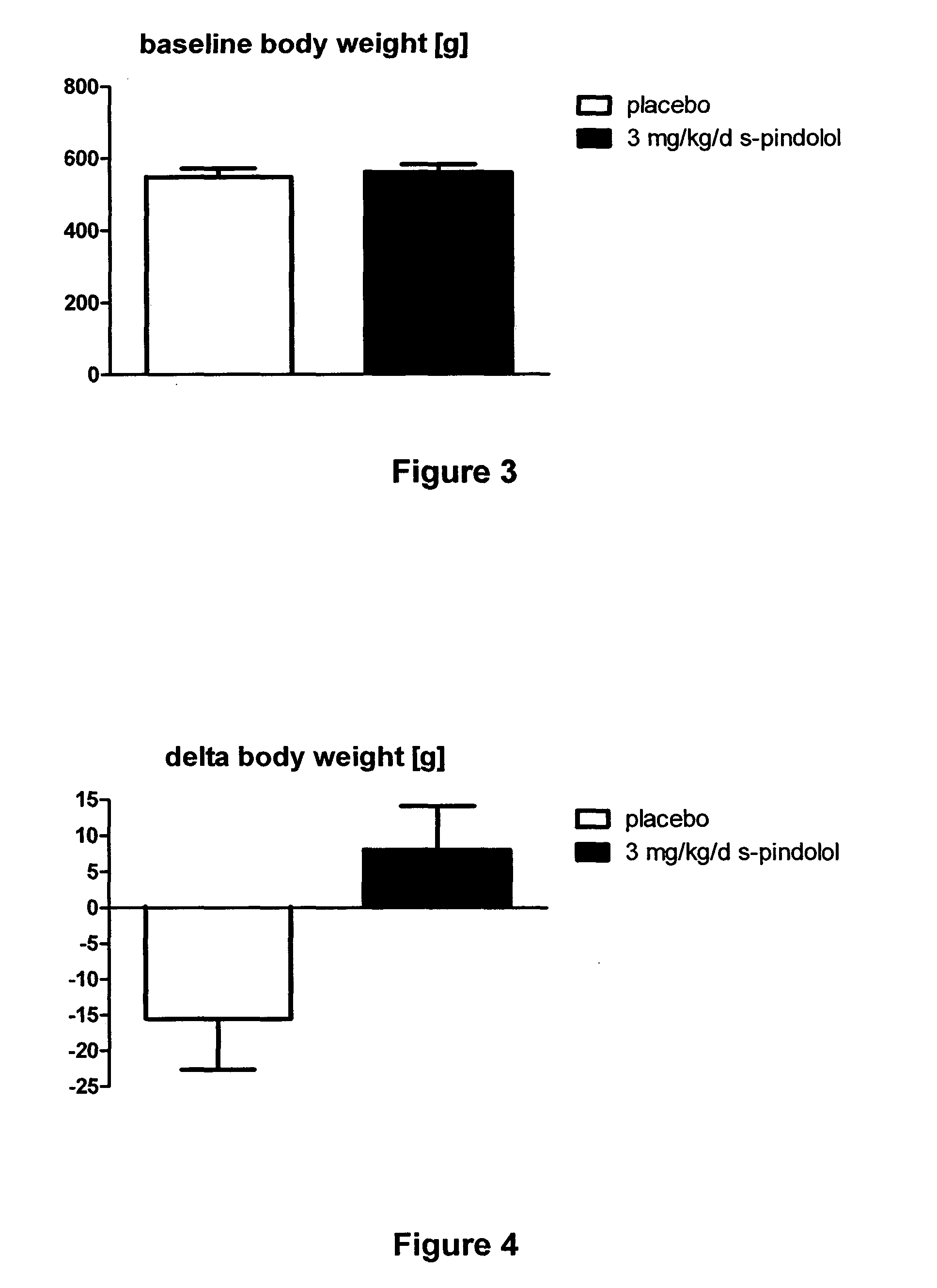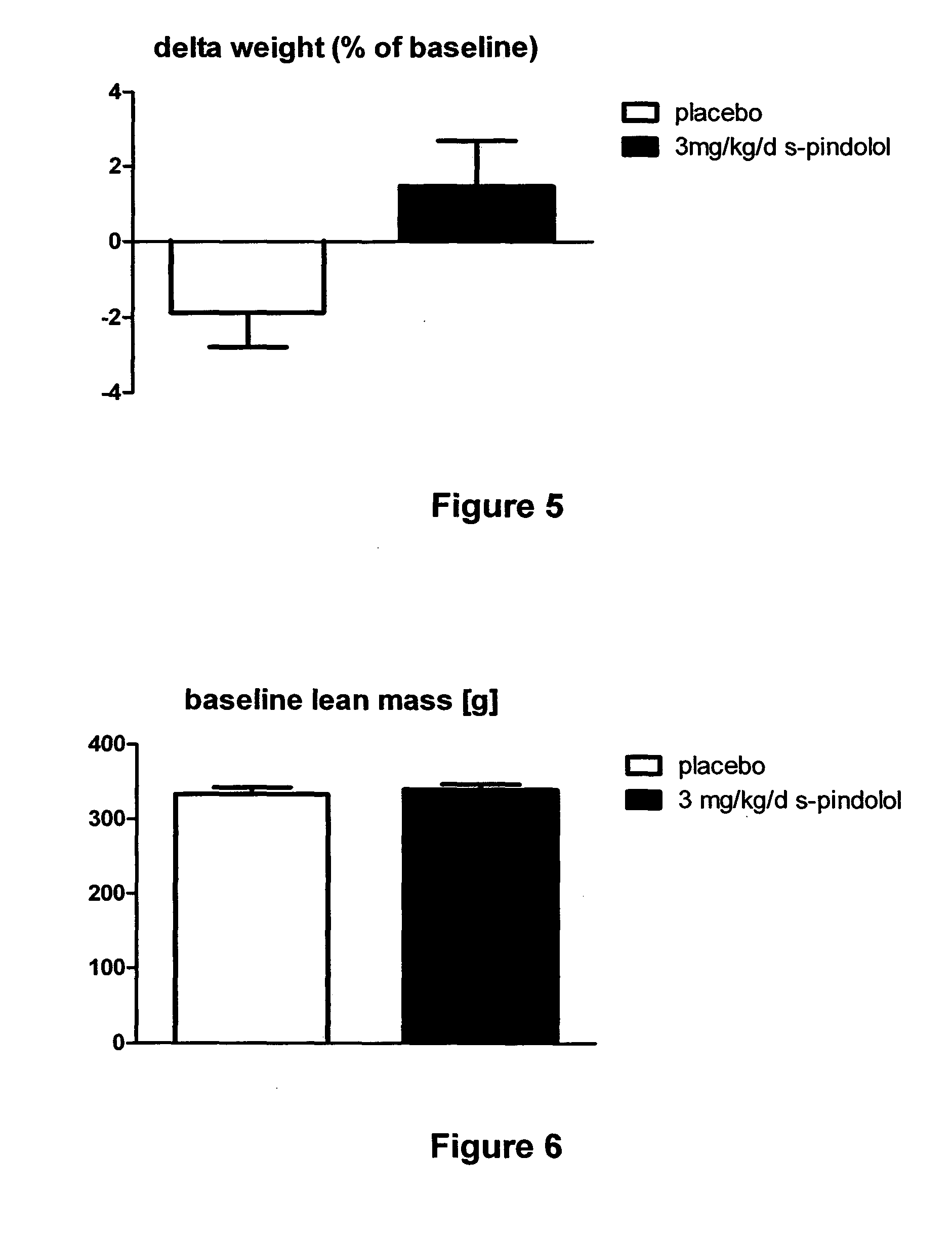Prevention and treatment of sarcopenia
a technology for sarcopenia and compound or method, applied in the field of compound or method for the treatment of sarcopenia, can solve the problem that the identification of a population at risk for sarcopenia would be an uncomplicated task for one skilled in the art, and achieve the effects of reducing fatigue, reducing blood pressure, and reducing the alteration of blood pressur
- Summary
- Abstract
- Description
- Claims
- Application Information
AI Technical Summary
Benefits of technology
Problems solved by technology
Method used
Image
Examples
example 1
Methods
[0042]Young, healthy, male Wistar Han rats (201.8±2.4 g) were housed in groups of two to three per cage under standard conditions. Animals were randomized to receive either 0.3 mg S-Pindolol / kg / d (n=5), 3 mg S-Pindolol / kg / d (n=5) or placebo (n=16) once daily per gavage for 16 days.
[0043]Body composition (lean mass) of the animals was analyzed using the EchoMRI-700 system (Echo Medical Systems, Houston, Tex., USA) before treatment and at the end of the study. Body weight was recorded before treatment and at the end of study. Organ weights were recorded at the end of study.
Results:
[0044]Body weight was significantly increased in animals treated with high dose S-Pindolol (FIG. 1). Lean body mass (i.e. muscle mass) was dose dependently increased by S-Pindolol (FIG. 2).
[0045]This effect was also seen in individual organ / tissue weights (table 1), where treatment with S-Pindolol shows a dose dependent increase in the weight of the gastrocnemius and tibialis muscles. Treatment has no...
example 2
Methods
[0046]Old, healthy, male Wistar Han rats (age 19 month, at the start of the experiment) were housed in groups of two to three per cage under standard laboratory conditions. Animals were randomized to receive either 3 mg / kg / d S-Pindolol / kg / d (n=8), or placebo (n=14) once daily per gavage for 28 days.
[0047]Body composition (lean mass) of the animals was analyzed using the EchoMRI-700 system (Echo Medical Systems, Houston, Tex., USA) before treatment, once per week during the study and at the end of the study. Body weight was recorded before treatment, once per week during the study and at the end of study. Organ weights were recorded at the end of study. One tibialis muscle per animals was dried at 60° C. for 48 h.
Results:
[0048]Total body weight and lean mass (i.e. skeletal muscle) were not different between placebo and 3 mg / kg / d S-Pindolol groups (FIGS. 3, 6). Body weight was significantly increased in animals treated with this high dose S-Pindolol (FIGS. 4, 5). Lean body mass...
PUM
| Property | Measurement | Unit |
|---|---|---|
| time | aaaaa | aaaaa |
| body weight | aaaaa | aaaaa |
| mass index | aaaaa | aaaaa |
Abstract
Description
Claims
Application Information
 Login to View More
Login to View More - R&D
- Intellectual Property
- Life Sciences
- Materials
- Tech Scout
- Unparalleled Data Quality
- Higher Quality Content
- 60% Fewer Hallucinations
Browse by: Latest US Patents, China's latest patents, Technical Efficacy Thesaurus, Application Domain, Technology Topic, Popular Technical Reports.
© 2025 PatSnap. All rights reserved.Legal|Privacy policy|Modern Slavery Act Transparency Statement|Sitemap|About US| Contact US: help@patsnap.com



